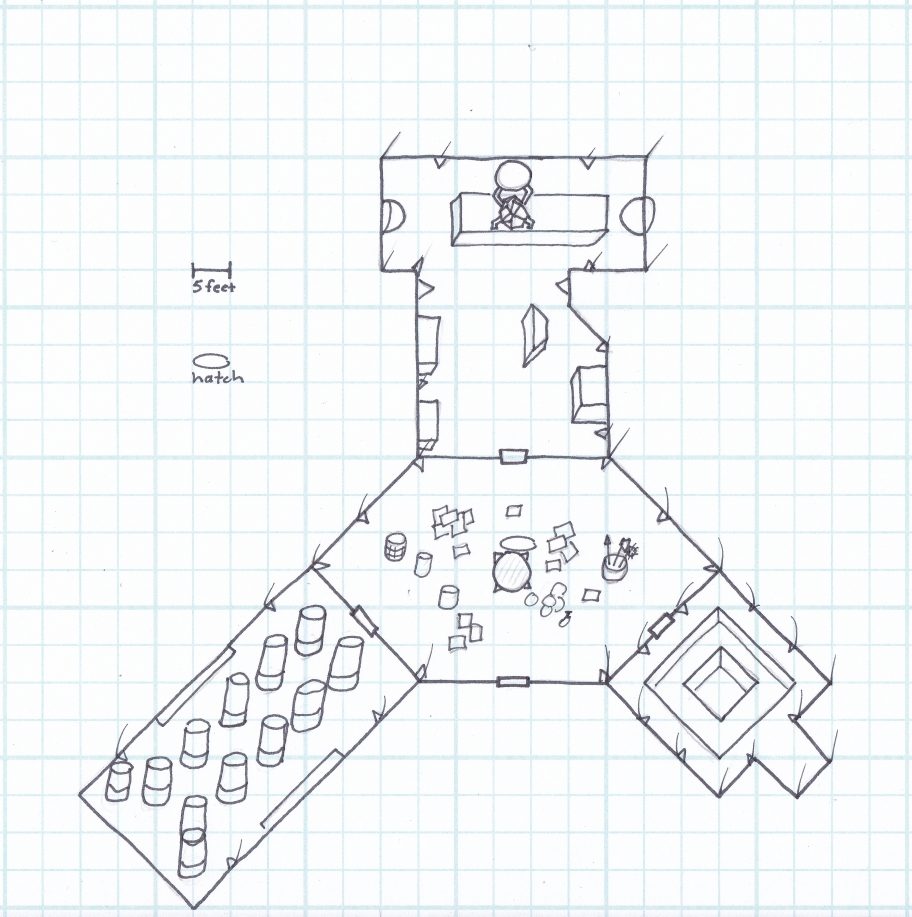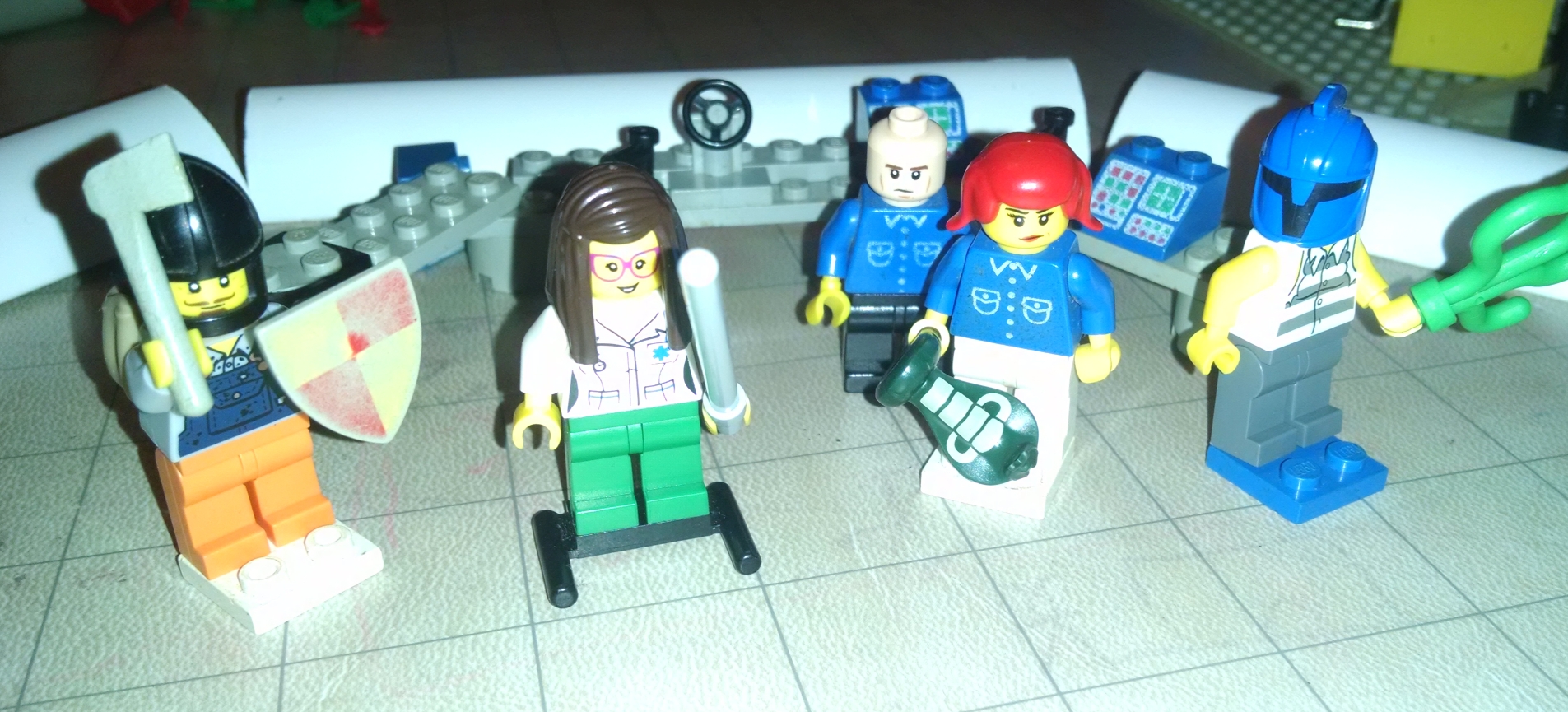Code of the Zone Ghouls
A scout wandering the wastes overheard a group of Zone Ghouls reciting the following creed:
Here in the Zone
We travel at night
We avoid the light
We leave no trace
We have no face
We are not here
We are everywhere
Do as you will
Keep what you kill
Posted in Uncategorized by Adam A. Thompson with no comments yet.
More Maps for Class of 198X
By popular request we’ve updated Class of 198X – The Adventure with additional maps!
Get your updated version of the adventure here.
Posted in Uncategorized and tagged Class of 198X by Adam A. Thompson with no comments yet.
Dwarven Death Knight
Medium undead, lawful evil
Armor Class 19 (plate armor), 21 (shield of faith)
Hit Points 67 (8d8+24)
Speed 25 ft.
Proficiency +3
STR 19 (+4) DEX 10 (+0) CON 16 (+3) INT 10 (+0) WIS 12 (+1) CHA 15 (+2)
Saving Throws Dex +3, Wis +4, Cha +4
Damage Resistances fire
Damage Immunities poison; necrotic
Condition Immunities charmed, exhausted, frightened, poisoned
Senses passive Perception 11, darkvision 120 ft.
Languages Common, Dwarven
Challenge 6 (2,300 XP)
Actions
Multiattack. The death knight makes two Frost Brand attacks.
Frost Brand. Melee greatsword: +7 to hit, reach 5 ft., one creature. Hit: 7 (2d6 + 4 slashing and 1d6 cold damage).
Spellcasting. The death knight is a 8th level spellcaster. Its spellcasting ability is Charisma (spell save DC 13, +5 to hit with spell attacks). It has the following spells prepared:
1st level: (4 slots): shield of faith, thunderous smite, bless, searing smite
2nd level: (3 slots): aid, branding smite
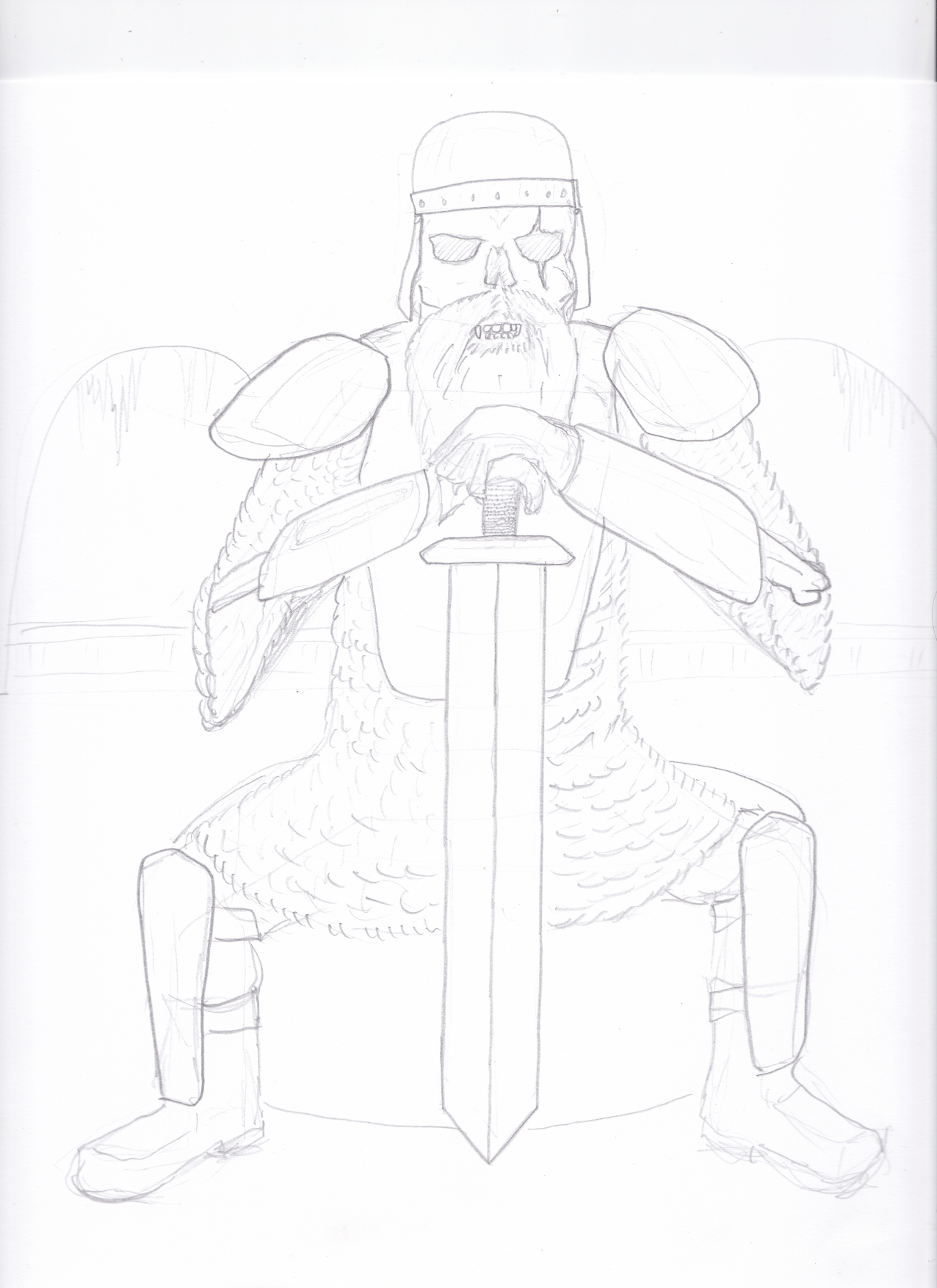
Posted in 5th edition Dungeons & Dragons, Character, Creature, Uncategorized by Adam A. Thompson with no comments yet.
Jäällätaudin the Ice Tongue
The History: This ancient blade’s full history is known only to the most studious Dwarven sages of the Dunheng Kingdoms, where it was forged to slay giants and dragons. In the centuries since, it has appeared in the hands of many heroes, only to be lost again with their passing. Most recently it was wielded by Jak, a King of the Fridon people who in tales is called the Giant Slayer. He was a king of the Fridon many years ago, when his people were attacked by the giants from the Danor Mountains. He fought them wearing the hide of a dragon and wielding Jäällätaudin, and drove them back to their burning peaks.
Below are statistics for Jäällätaudin using 5th edition Dungeons & Dragons rules. To customize it add some of the magic item quirks from the Dungeon Master’s Guide. Or alter these stats or add abilities to make it fit into your campaign.
Weapon (greatsword), very rare (requires attunement)
This thick-bladed, angular greatsword is a masterpiece of dwarven artistry. You gain a +1 bonus to attack and damage rolls made with this magic weapon. Against creatures with Damage Immunity to fire, the bonus is instead +3.
Sentient
Jäällätaudin is sentient, and is only interested in slaying dragons, and giants, or other fire-type creatures (salamanders, fire elementals, etc.). It will communicate its history through nightly dreams (telepathy), where the wielder lives through the many battles that the sword’s previous owners fought. If its wielder does not actively peruse the killing of its foes, a deep chill comes over the wielder and they must succeed on a DC 20 Constitution saving throw or become fatigued and vulnerable to cold damage until the sword is convinced the wielder will do as it wishes.
Many times in the past, this compulsion has driven the sword’s wielders to their doom, for no warrior survives every fight. Other times stubborn warriors resisted the sword’s commands, discarding it in an icy ravine or mountain lake. Twice those who could not leave the sword behind died from the cold, buried under a slowly-growing ice.
Cursed
This sword’s driving purpose and blood-soaked past have coalesced into a curse – no one, once attuned, may voluntarily discard the blade unless they succeed on a DC 20 Charisma saving throw.
Posted in 5th edition Dungeons & Dragons, Fantasy, Magic Item, Uncategorized by Adam A. Thompson with no comments yet.
5th edition Dungeons & Dragons Combat Critical Fumble Rules
I like critical fumbles in my D&D game. They increase randomness, speed up combat, and create tension and chaos on the battlefield. For me it’s a significant part of the fun of the game, so I use a critical fumble rule for combat when I’m the Dungeon Master or Referee.
So here’s my house rule: when someone rolls a 1 on an attack roll, they have to roll a d20 again to see how bad the fumble is:
20 – Recovery – the fumble has no major ill effect (feel free to make up some comical reason why)
16-19 – Over-swing – disadvantage on fumbler’s next attack roll
12-15 – Miss-step – advantage on the next attack against fumbler
9-12 – Fall Down – fumbler falls prone
5-8 – Drop Weapon – fumbler drops weapon, or else is dazed next round
4-2 – Wild Swing – attack self or ally (attacking player makes new attack roll)
1 – The Gods Frown – attack self or ally with advantage (attacking player makes new attack rolls), or something equally disastrous
The basic idea is, if you roll a 1, something bad happens. Not only have you failed, but your situation has gotten worse somehow.
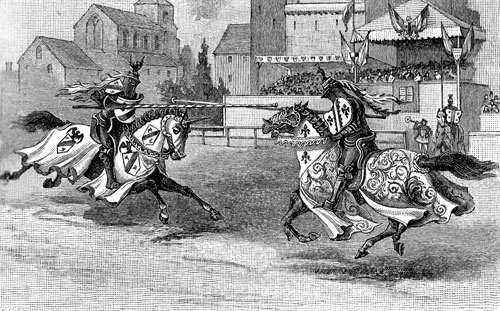
I used to use a different simple critical fumble table, where the results were basically a d4, and the lower you rolled the worse it was. I like it because it’s easy to memorize and use without having to refer to a table.
The above table is expanded to use the full numerical granularity of a d20. It also uses the “rolling 20 is good, rolling 1 is bad” game design element.
D4 Fumble Table
4 – off balance – enemies have advantage to attack you next round
3 – fall down – fall prone
2 – drop weapon – drop weapon or are dazed next round
1 – bad swing – attack self or ally
There have been a lot of critical fumble rules published, but recently I’ve seen a fun idea about how to handle fumbles. On the Moisture Farmer’s podcast, I heard them using a new-to-me critical fumble rule. Not only is it great for it’s simplicity, but also for the opportunity to be creative.
If a player rolls a 1, the GameMaster decides what happens to the player’s character. When a GameMaster rolls a 1, the players decide what happens to the GameMaster’s character. So when the GM fumbles, the players get to narrate what happens. When a player fumbles, the GM gets to narrate it.
No boundaries are needed, but as a DM, I’d probably usually limit to to, at worst, damaging your own character or an ally. If the players always end up demanding the the monsters fall on their swords and die, then it would be reasonable for the DM to decide the same thing happened to the PCs. So there’s an opportunity to do some creative role-playing and cooperate to keep things “in bounds”.
Do you use critical fumbles in your game? Why or why not? Let us know in the comments below.
Posted in 5th edition Dungeons & Dragons, d20 Future, D20 Modern, Gamma World, Uncategorized, Variant Rules and tagged critical fumble by Adam A. Thompson with no comments yet.
Wild Elves of the Pirate Kingdoms
In the Chillgrove Woods north of Allenwood a settlement of wild wood elves hides, well secured within a vast mountain grove. Their hunters deter the ice kobolds from the north and the humans from the south from encroaching on their territory, and any who could sneak past them face an enchantment that protects the settlement.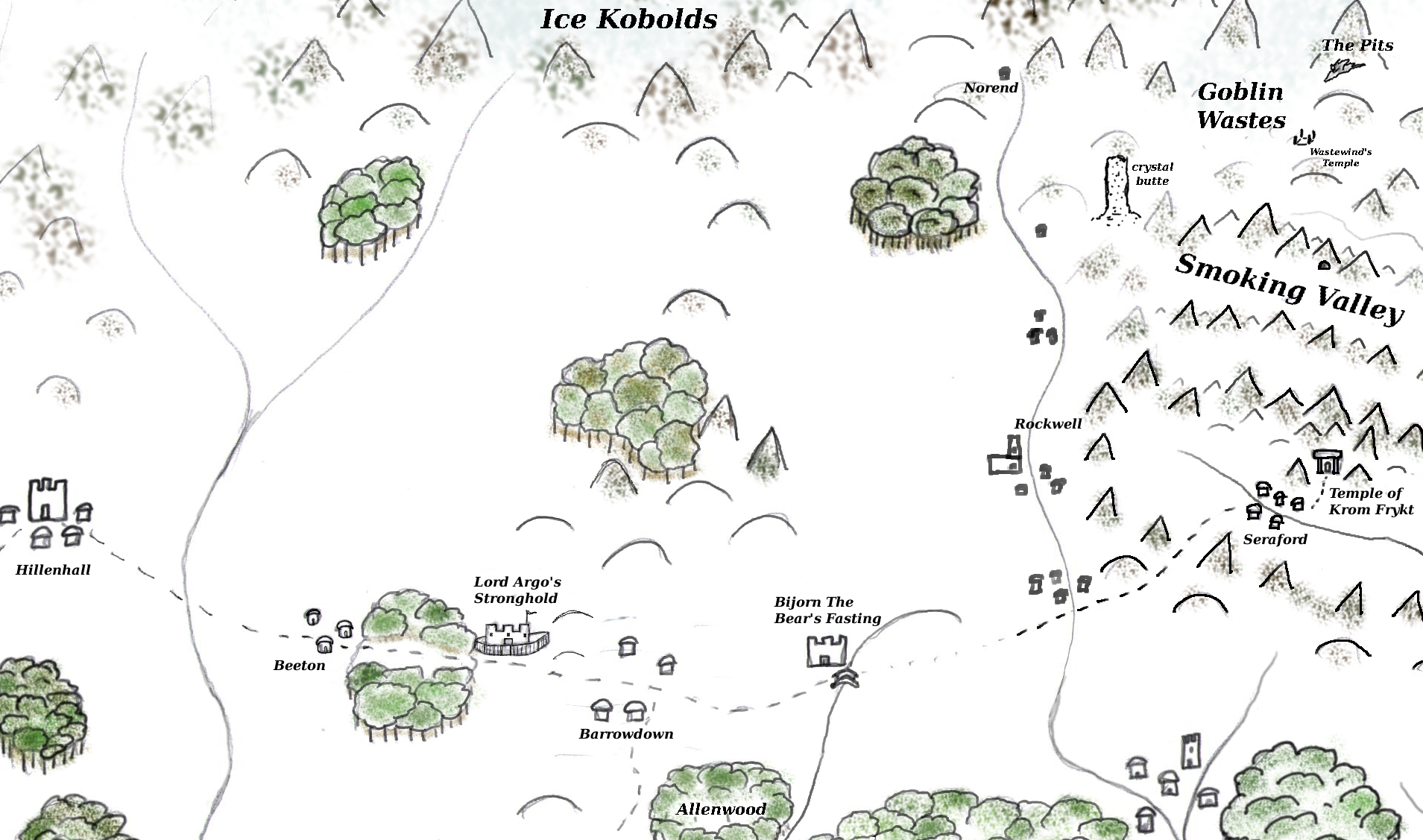
For where the mountain stream becomes a river, the water splits and forms an island, where their dwellings nestle among the towering trees. The water around this island is enchanted such that only elves may cross to the island. Any other who tries will find themselves crossing all the way to the other side of the split in the river, magically bypassing the island completely. This ward may only be bypassed by use of the password, or the spells knock, dispel magic, etc.
Within, their settlement is a pristine embodiment of wood elf culture in the Pirate Kingdoms. Their fierce hunters protect the territory of the animals they hunt from other hunters. Gatherers and cultivators of informal gardens of edible plants, they feast on the wood’s mushrooms, berries, acorns, honey, rabbit, and deer. Patient makers of fine tools, garments, and art, mainly without the use of metal. Good friends with the druids of the region, and host to a grand old druid.
Their homes are mainly built up in the trees, such that one might not notice them if not for the rope ladders hanging down here and there, and the stairs built up around the largest tree in the center of the island. In that tree lives the town’s eldest druid and their family.
They follow the creed of the wood elves, which is that everyone must be free to do as they wish, as long as they harm none. A handful of humans, half-elves, haflings, gnomes, and other forest fey live here in this peaceful haven. When something of import presents itself to the town, a meeting is called, and the people decide as they will, by consensus or vote. Occasionally they must mobilize themselves against the ice kobolds, goblins, and humans who surround them, but their overwhelming advantage in their home woods has led to a fearsome reputation as “the Death Elves of Chillgrove Woods” among their periodic foes.
Posted in Fantasy, Location, Region, Uncategorized and tagged ProphecyoftheSummerFrost by Adam A. Thompson with no comments yet.
Spooky Mapvember Madness!
First and second drafts of the Vampire Mansion of Von Wlademar. Once the map is done I’ll publish it on @ClawClawBite along with a short adventure to use with it. #mapvember #DnD 🧛♀️🧛♂️🦇 pic.twitter.com/A9yO5ROvdl
— Adam A. Thompson (@AdamAThompson) November 9, 2017
Posted in Uncategorized by Adam A. Thompson with no comments yet.
Mantid Drug – “Bug Love”
Designed by a rogue xeno-bio-chemist in the coreward part of the Skein Reach, this drug stimulates a mantid’s endocrine and reproductive systems, creating euphoric sensations in the user.
Mantid use it by smearing the paste on their thorax, where they draw the chemical pheromones into their respiratory system.
Side effects include friendliness, often verging on the inappropriate, and stimulation of the egg-depositing organs, causing fluid and sometimes eggs to be released involuntarily.
Posted in Science-Fiction, Traveller, Uncategorized by Adam A. Thompson with no comments yet.
Galactic Death Squads, LLC (GDS)
The largest and most notorious killer-for-hire outfit in the rim, the GDS motto is “Anyone, anywhere. Guaranteed.” Their reputation on this point is impeccable.
As a result of their fearsome reputation they are variously called “Death, Incorporated.”, “Death Itself”, “Goram Dam Shit”, or even “The Gods” or “Gods of Death.”
Despite GDS’s mystique, they are more of a network of assassins than an organized mercenary company. Their agents are said to suffuse the galaxy, crossing all borders and able to strike at anyone, anywhere in the galaxy.
Posted in Uncategorized by Adam A. Thompson with no comments yet.
